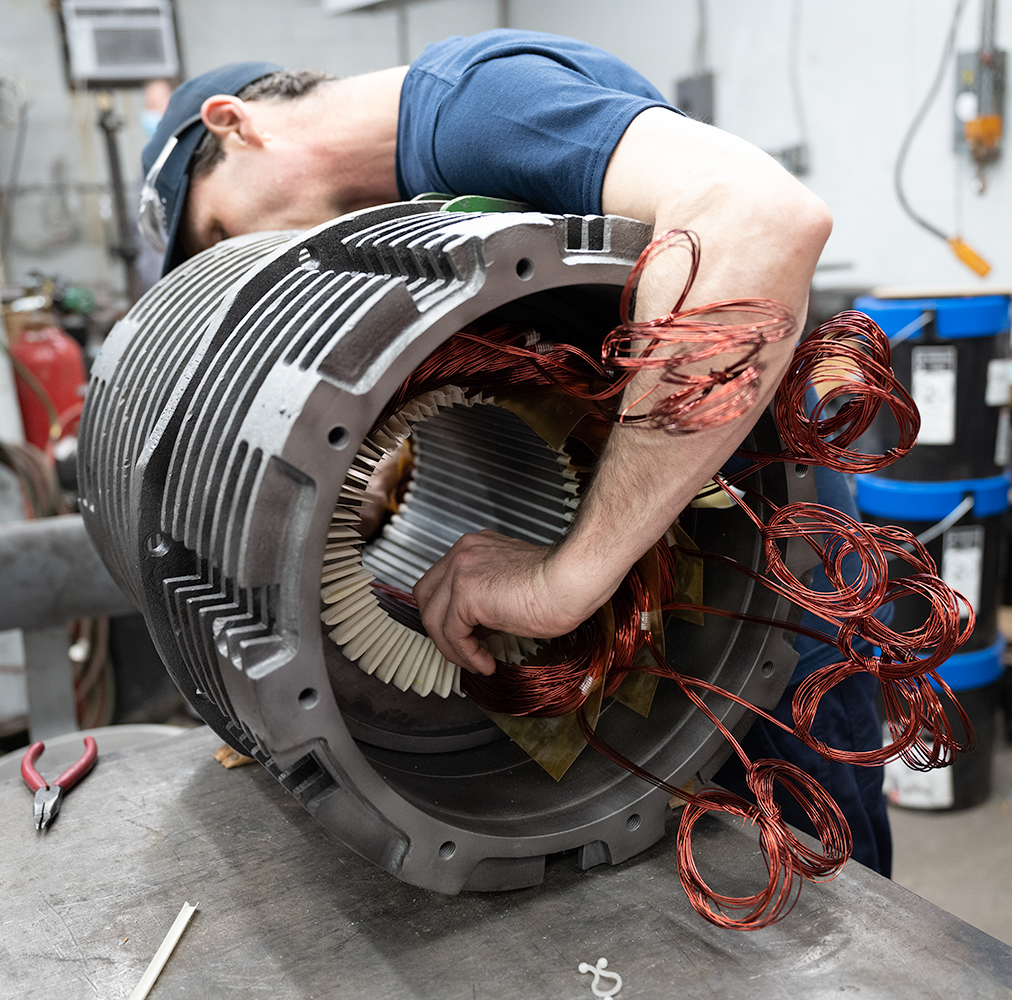Basic Motor Testing Tools and Methods November 23, 2022
When a motor stops working, getting to the bottom of the problem can be challenging unless you're a motor specialist or technician. Knowing the basic motor testing methods, techniques, and tools can help you detect and diagnose motor problems confidently.
Electrical measurements provide valuable diagnostic information
When an electric motor fails to start, runs intermittently, or trips its overcurrent device, there might be any number of causes. Luckily, diagnostic tools can help illuminate the problem, like a clamp-on ammeter, Megger test, sensor, or digital multimeter. The go-to is usually the digital multimeter, which works for most motors.
The basics: motor testing tools and techniques
Assuming you have a motor problem, we'll run through this in high-level steps toward a diagnosis. If it's all Greek to you, stop reading and just give us a call. We can help!
Conduct a general inspection of your motor
It makes sense to check the appearance of the motor first as part of a general inspection. Your vision will serve as your first defence regarding motor testing tools. Check for any noticeable damage to the body or shaft. Attempt to turn the motor by hand (with the power disconnected, of course!). The shaft should turn easily unless you're dealing with a monstrous motor. If it doesn't, there could be an obstruction inside or a seized bearing.
It is worth noting that new bearings tend to seize up because their tolerances are tighter. The problem is compounded when there's moisture in the environment, or the motor has been idle for an extended period. Most times, the operation of the motor can be restored by oiling the front and rear bearings without having to take the motor apart.
Need Motor Repiar Now?
Our CSA-Certified repair facility can help you get back up and running.
Try out a power supply test using a multimeter
Next up for motor testing tools and methods requires using a multimeter. Using a digital multimeter, you can check that the correct voltage is applied to the motor. Take a voltage reading at the motor terminals. You're looking for the same voltage level measured at the entrance panel main breaker. Typically, an electric motor requires that the voltage stays within a specific range of the voltage rating given on the motor's tag or nameplate.
No or low voltage? Low voltage can prevent motors from starting or might slow motor operation. Frequent operation at low voltage can also damage some motors. Now what? Make sure the proper wire size is used for the circuit's ampacity and length. And you can also test for low voltage in the building or plant.
Hang on to that multimeter; it's time to check the resistance of the motor circuits. Measuring resistance determines the condition of a circuit or component in a motor. Resistance of components used to control circuits starts low but increases over time due to contaminants like dirt and moisture. Contamination causes the insulation to break down. Unbalanced resistance can also result in increased operating temperature, leading to thermal degradation of the insulation.
An insulation resistance test using a Megger is helpful
You can do a health check on insulation using an insulation resistance test (or megohmmeter), also known as Megger, which can provide important information about the condition of motor insulation. A high resistance reading, great than ten megohms, will indicate that the motor insulation is good. Conversely, a low resistance reading indicates poor or failing insulation. It's common for the resistance drop to happen gradually, so it's essential to conduct periodic tests on the insulation.
There are three types of insulation failure that can occur:
- Ground wall insulation: the primary insulation between the copper winding and steel core
- Phase-to-phase insulation: the secondary insulation between the end turns of a random wound motor
- Turn-to-turn insulation: the secondary insulation applied to the surface of the copper winding
Insulation deterioration is one of the first signs that a motor will fail electrically. And secondary insulation is the least able to sustain wear and tear. Surge testing is a non-destructive test that can be carried out to detect the early stages of secondary insulation deterioration.
A running amps test will measure current
A running amps test determines how much energy is drawn to drive the motor. Using a clamp-on meter, check the full load amps (FLA) and compare it with the value on the nameplate or manual. If the deviation is well below the manufacturer's specification, this may indicate problems with the motor.
Evaluate system performance using a power quality analyzer
Another essential basic motor test is an evaluation of system performance. You can detect any overloaded conditions by measuring torque, efficiency, and speed. A power quality analyzer makes this a breeze and eliminates the need for motor load sensors. It measures the current and voltage waveforms and compares them against rated specifications to calculate the motor's mechanical performance.
The analysis is presented in summarized readouts, making it easy to know if adjustments are needed before a breakdown occurs. The power quality analyzer can also provide measurements to determine a motor's overall efficiency and mechanical power under operating load conditions.
Let Duke come to the rescue if you're looking for additional help diagnosing your motor problems. We eat motor problems for breakfast, after all.







